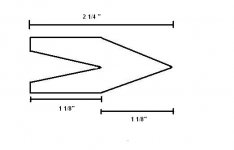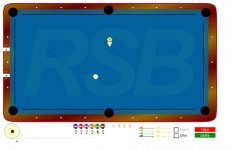Has anyone here used Babe Cranfield's Aiming arrow as an aiming aid? It seems like a very easy to use and intuitive system, much like the ghost ball but more simplified. The system is briefly described in Cranfield's Straight Pool Bible (pg. 17-24).
For those of you not familiar with it, I've attached a few pictures of the "arrow" itself and how it can be applied. The first picture is the arrow itself, along with the dimensions. The second picture is an attempt to illustrate how the arrow should be used. The arrow is slid underneath of the object ball facing in the exact opposite direction of the intended direction of the OB. If used correctly, the tip of the arrow (marked with a red dot in the picture) is the exact spot that the center of the cueball should be aimed at (and subsequently travel through) in order to pocket the OB. This works from any angle, but obviously does not compensite for throw (be it collision induced or english-induced). Regardless, it seems like a fairly simple and elegant aid to me.
Any thoughts or experiences?
For those of you not familiar with it, I've attached a few pictures of the "arrow" itself and how it can be applied. The first picture is the arrow itself, along with the dimensions. The second picture is an attempt to illustrate how the arrow should be used. The arrow is slid underneath of the object ball facing in the exact opposite direction of the intended direction of the OB. If used correctly, the tip of the arrow (marked with a red dot in the picture) is the exact spot that the center of the cueball should be aimed at (and subsequently travel through) in order to pocket the OB. This works from any angle, but obviously does not compensite for throw (be it collision induced or english-induced). Regardless, it seems like a fairly simple and elegant aid to me.
Any thoughts or experiences?

